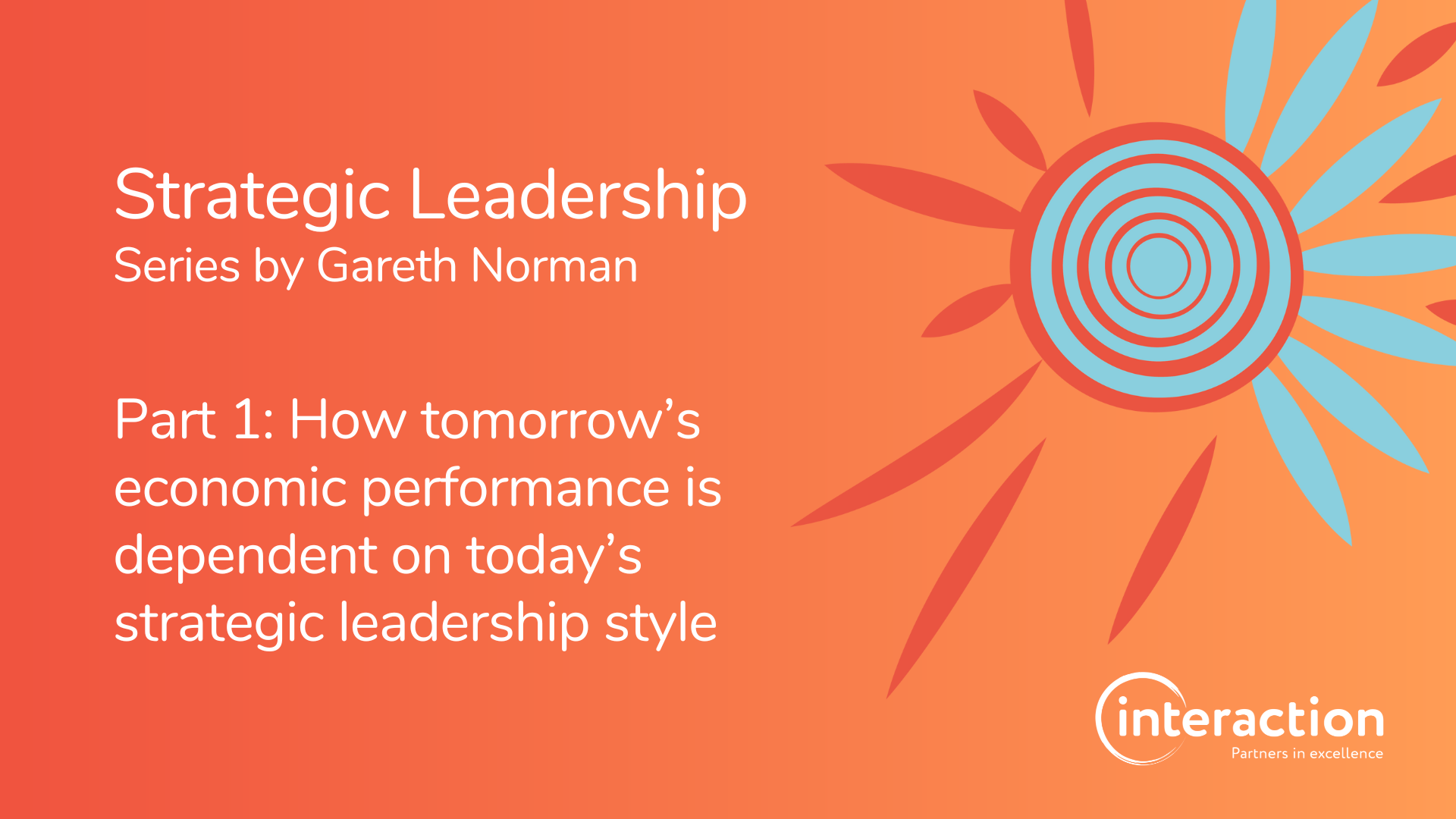
In part 1 of this Strategic Leadership article series, I emphasised the importance of a clear vision for organisations to move forward and discussed the limitations of a uniform leadership approach. The benefits and settings in which both transformational and transactional leadership styles have a place were introduced. This article focuses on the influence types of leadership styles have on the direction of corporate vision and how understanding the people in your team will complement your leadership style.
Growth and innovation vs efficiency and stability – what leadership style suits the stage of our organisation?
Leadership styles can have a significant impact on a business’ strategic plan and visa-versa, the choice of leadership styles should be aligned with the set strategic goals and objectives of the organisation to ensure the most effective and positive outcomes for all involved.
When it comes to aligning leadership styles with an organisation’s strategic plan, consider the organisation’s vision, mission, and goals. A transformational leadership style more commonly suits an organisation that is in a stage of innovation and growth, whilst a transactional approach to leadership can benefit companies that are currently focused on efficiency and stability. As industries and businesses evolve, so should your leadership style and the style of your team leaders and senior management.
Transformational leaders are known for their ability to inspire and empower their followers to work towards a common goal. They often communicate a clear and compelling vision that inspires people to work together and make a difference. They also provide individualised attention and support to their team members, helping them to develop their skills and talents. All of these elements benefit a business in a strong growth stage.
In contrast, transactional leaders focus more on maintaining the status quo and achieving specific goals through rewards and punishments. They often use a system of rewards and consequences to motivate their team members to achieve the desired outcomes. Transactional leaders are focused on efficiency and productivity, and they often rely on established policies and procedures to achieve their goals.
Leading people requires understanding people
Mastering leadership styles to suit the situation is one part of effective leadership, ultimately it is the element of “people” that will ensure you exceed or fall short of your expectations. Leading people requires an understanding of the human and psychological elements of the teams working towards a common goal and how to lead through differing motivations and emotions that drive both individual and collective actions. Some general principles to think about:
- Self-awareness: Understanding your own values, beliefs, strengths and weaknesses are important in managing biases, stereotypes and default behaviours that might affect a leader’s ability to manage their emotions and develop empathy for others.
- Motivations: Do you know how to motivate your team members to achieve their goals? Motivation can be intrinsic (such as personal growth and satisfaction) or extrinsic (such as rewards and recognition), and different people are motivated by different factors.
- Communication: Can you convey your vision and expectations clearly, and are you actively listening to feedback and adapting to a diverse workforce?
- Emotional Intelligence: Do you manage your own emotions in positive ways to manage stress, communicate effectively and empathise with your team? Leadership demonstrating high emotional intelligence has strong links to high-performing teams that can easily overcome challenges, changes, and conflicts.
- Decision-making: Leaders must make informed decisions that are aligned with the strategic goals of the business, considering different perspectives and using emotional intelligence to ensure that decisions are both fair and ethical.
Leadership demonstrating high emotional intelligence has strong links to high-performing teams that can easily overcome challenges, changes, and conflicts.
How Interaction Consulting works with local leaders
If you haven’t worked with Interaction Consulting before you might not know that not only do we provide expert guidance and support to people and organisations in the areas of leadership, human resources, and organisational development, but we have been doing so for over 28 years.
We work with some of Australia’s largest organisations, not-for-profits and government agencies, and collaborate on significant projects to improve employee performance and address organisational needs. This includes organisational assessment and development, strategic planning, employee engagement programs, talent management services, and customised training and development programs to help organisations improve their workforces’ skills and competencies.
For individuals, we offer leadership coaching and development programs to help people grow and succeed in their careers. For those looking for assistance in navigating career changes, we also offer career coaching and transition services.
Interaction Consulting’s team of experienced consultants works closely with clients to understand their unique needs and challenges. Interaction Consulting then develops tailored solutions that help clients achieve their goals and improve their performance. We are always looking to partner with new people and organisations so if you would like to understand more about you can develop your leadership skills or the skills of your team, please don’t hesitate to connect with me on LinkedIn.
Next week, this series on Strategic Leadership will draw to a close with my final article on Your People are Your Most Valuable Asset.









